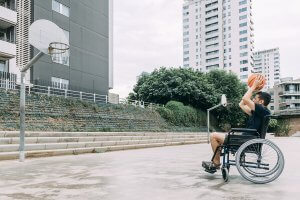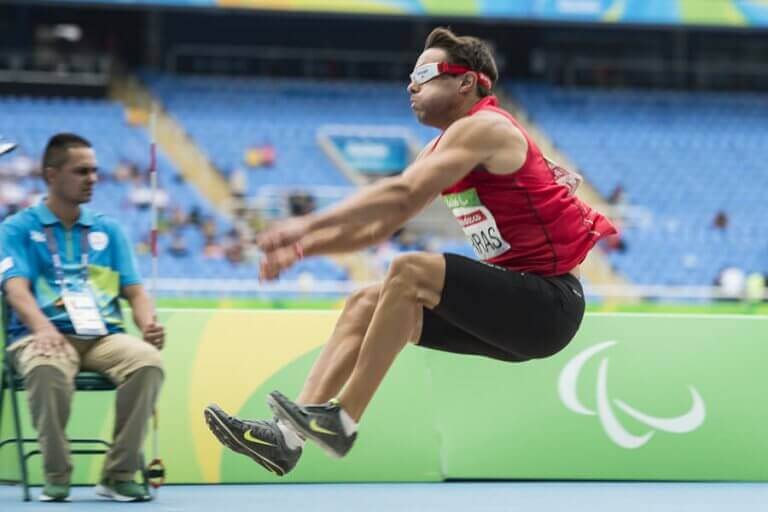Legal Aspects of Sport for Disabled People

Handicapped sports have been gaining a lot of strength. So much so that big events such as the Paralympic Games attract more and more athletes, countries and spectators. Besides that, the number of disabled people in the world has also increased during the last few decades.
World data
Let’s look at some data from the World’s Health Organization (WHO). Individuals who suffered from a disability used to represent 10 percent of the world’s population during the seventies. By the year 2010, this number had gone up to 15 percent. There was also an increase in the pathologies that derive from a physical or cognitive disability.
The growth of these handicapped sports modalities also reveals new challenges in the legal field. A clear example would be the development of a more transparent and specific regulation for the practice of handicapped sports.
With this in mind, let’s look at some basic legal aspects of sports for disabled people. But first, we’ll analyze the concept of disability adopted in the sports and legal fields.
The concept of disabled people and society’s perception
One of the most accepted concepts for disability is the one proposed by the United Nations Organization. The definition states as follows:
“The term, “persons with disabilities” is used to apply to all persons with disabilities including those who have long-term physical, mental, intellectual or sensory impairments which, in interaction with various attitudinal and environmental barriers, hinders their full and effective participation in society on an equal basis with others.”
This definition includes a perspective that’s still controversial. The problem is that it doesn’t attribute the problem of disability to a disease or a congenital/hereditary condition.

According to the UN perception, this concept derives from the way society looks at people with different characteristics to those that are considered ‘normal’, ‘useful’ or ‘healthy’.
Because of this, the consideration of the UN reinforces the need to work from the State, and as a society, in public policies and private initiatives. It’s about promoting and raising awareness about the diversity and integration of disabled people. Said integration must happen within the work, political, sports and legal fields, as well as the coexistence of a community.
Sports for disabled people as integration
Once again, we have to view sports as a fundamental integrating agent to incorporate disabled people into the structures and dynamics of our society. Sports have a positive impact on the rehabilitation of an individual; they also help to combat isolation, prejudice, and inequality.
Promoting sports for disabled people should be one of the pillars of public social and work integration policies. Consequently, it’s necessary to organize and regulate the different competitions, and public and private entities, that participate in sports activities for people with disabilities.
In reality, the big legal challenge in regards to the promotion and regulation of handicapped sports is, precisely, establishing more efficient mechanisms to collect, coordinate and promote all the actions and initiatives from the different tiers towards a general goal. The objective should reflect the state and autonomous legal regulations.
Along with promotion and regulation strategies, it’s essential to generate control mechanisms that watch over the rights of disabled people. We must act to combat social exclusion. And the way to achieve this is by ensuring that the policies are carried out on time and properly by the authorities and corresponding organizations.
Rights for disabled people in Spain
In 1975, the rights of disabled people were recognized for the first time. This happened with the creation of the Declaration on the Rights of Disabled Persons. It was one of the first important historic milestones.

Two years later, in 1978, the National Plan for the Prevention of Disability would come into existence in Spain. It established the roles of public authorities to create prevention, rehabilitation, treatment and integration policies for physical, sensorial and psychic disabilities.
This plan marked a before and after, as it inspired the main Spanish legislative text regarding the attention to disability: the Law of Social Integration of People with Disabilities (LISMI Law 13/1982).
Since its passing, the LISMI has provided many contributions. One of them is acknowledging the need to promote integration and offer integral services through sports, cultural activities, leisure actions, and entertainment, etc.
Likewise, it’s important to highlight the legal and social actions to optimize accessibility; especially in public spaces, according to the WHO’s declaration in 2011. In this sense, we have to give a special mention to the actions of the Spanish Federation of People with Physical Disabilities.
Lastly, we can’t forget that guaranteed access is a key element for disabled people to integrate with society. It allows them to enjoy a balanced life with jobs, health, education and free time, among other points.
Handicapped sports have been gaining a lot of strength. So much so that big events such as the Paralympic Games attract more and more athletes, countries and spectators. Besides that, the number of disabled people in the world has also increased during the last few decades.
World data
Let’s look at some data from the World’s Health Organization (WHO). Individuals who suffered from a disability used to represent 10 percent of the world’s population during the seventies. By the year 2010, this number had gone up to 15 percent. There was also an increase in the pathologies that derive from a physical or cognitive disability.
The growth of these handicapped sports modalities also reveals new challenges in the legal field. A clear example would be the development of a more transparent and specific regulation for the practice of handicapped sports.
With this in mind, let’s look at some basic legal aspects of sports for disabled people. But first, we’ll analyze the concept of disability adopted in the sports and legal fields.
The concept of disabled people and society’s perception
One of the most accepted concepts for disability is the one proposed by the United Nations Organization. The definition states as follows:
“The term, “persons with disabilities” is used to apply to all persons with disabilities including those who have long-term physical, mental, intellectual or sensory impairments which, in interaction with various attitudinal and environmental barriers, hinders their full and effective participation in society on an equal basis with others.”
This definition includes a perspective that’s still controversial. The problem is that it doesn’t attribute the problem of disability to a disease or a congenital/hereditary condition.

According to the UN perception, this concept derives from the way society looks at people with different characteristics to those that are considered ‘normal’, ‘useful’ or ‘healthy’.
Because of this, the consideration of the UN reinforces the need to work from the State, and as a society, in public policies and private initiatives. It’s about promoting and raising awareness about the diversity and integration of disabled people. Said integration must happen within the work, political, sports and legal fields, as well as the coexistence of a community.
Sports for disabled people as integration
Once again, we have to view sports as a fundamental integrating agent to incorporate disabled people into the structures and dynamics of our society. Sports have a positive impact on the rehabilitation of an individual; they also help to combat isolation, prejudice, and inequality.
Promoting sports for disabled people should be one of the pillars of public social and work integration policies. Consequently, it’s necessary to organize and regulate the different competitions, and public and private entities, that participate in sports activities for people with disabilities.
In reality, the big legal challenge in regards to the promotion and regulation of handicapped sports is, precisely, establishing more efficient mechanisms to collect, coordinate and promote all the actions and initiatives from the different tiers towards a general goal. The objective should reflect the state and autonomous legal regulations.
Along with promotion and regulation strategies, it’s essential to generate control mechanisms that watch over the rights of disabled people. We must act to combat social exclusion. And the way to achieve this is by ensuring that the policies are carried out on time and properly by the authorities and corresponding organizations.
Rights for disabled people in Spain
In 1975, the rights of disabled people were recognized for the first time. This happened with the creation of the Declaration on the Rights of Disabled Persons. It was one of the first important historic milestones.

Two years later, in 1978, the National Plan for the Prevention of Disability would come into existence in Spain. It established the roles of public authorities to create prevention, rehabilitation, treatment and integration policies for physical, sensorial and psychic disabilities.
This plan marked a before and after, as it inspired the main Spanish legislative text regarding the attention to disability: the Law of Social Integration of People with Disabilities (LISMI Law 13/1982).
Since its passing, the LISMI has provided many contributions. One of them is acknowledging the need to promote integration and offer integral services through sports, cultural activities, leisure actions, and entertainment, etc.
Likewise, it’s important to highlight the legal and social actions to optimize accessibility; especially in public spaces, according to the WHO’s declaration in 2011. In this sense, we have to give a special mention to the actions of the Spanish Federation of People with Physical Disabilities.
Lastly, we can’t forget that guaranteed access is a key element for disabled people to integrate with society. It allows them to enjoy a balanced life with jobs, health, education and free time, among other points.
All cited sources were thoroughly reviewed by our team to ensure their quality, reliability, currency, and validity. The bibliography of this article was considered reliable and of academic or scientific accuracy.
- Ley 13/1982, de 7 de abril, de integración social de los minusválidos. Extraído de: https://www.boe.es/buscar/act.php?id=BOE-A-1982-9983
- Web Federación Española Personas con Discapacidad Física. Extraído de: http://www.feddf.es/
This text is provided for informational purposes only and does not replace consultation with a professional. If in doubt, consult your specialist.








